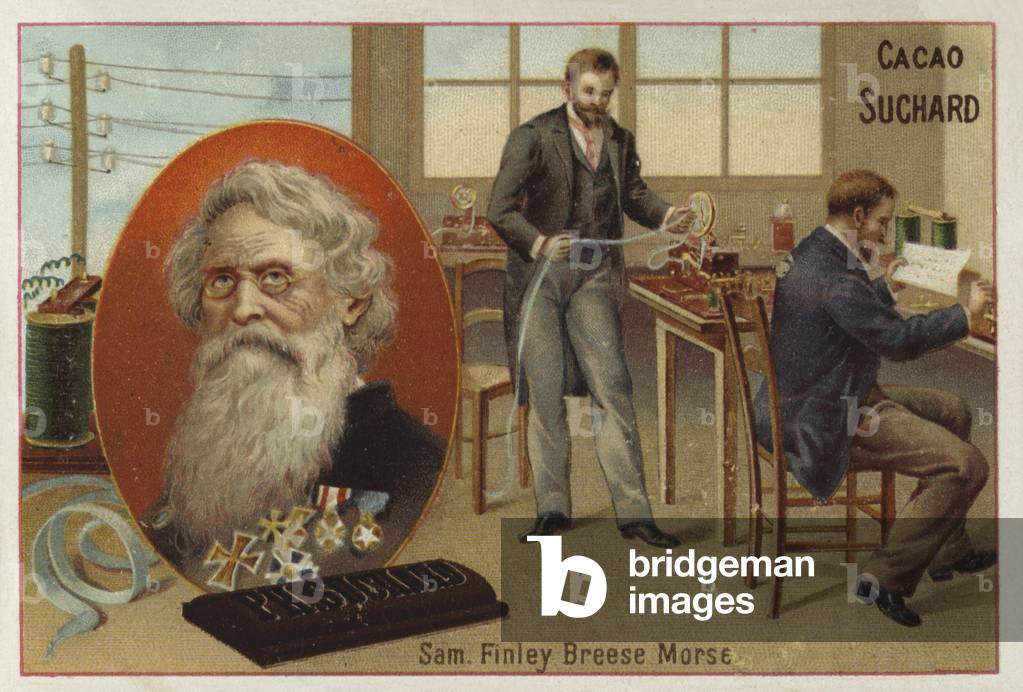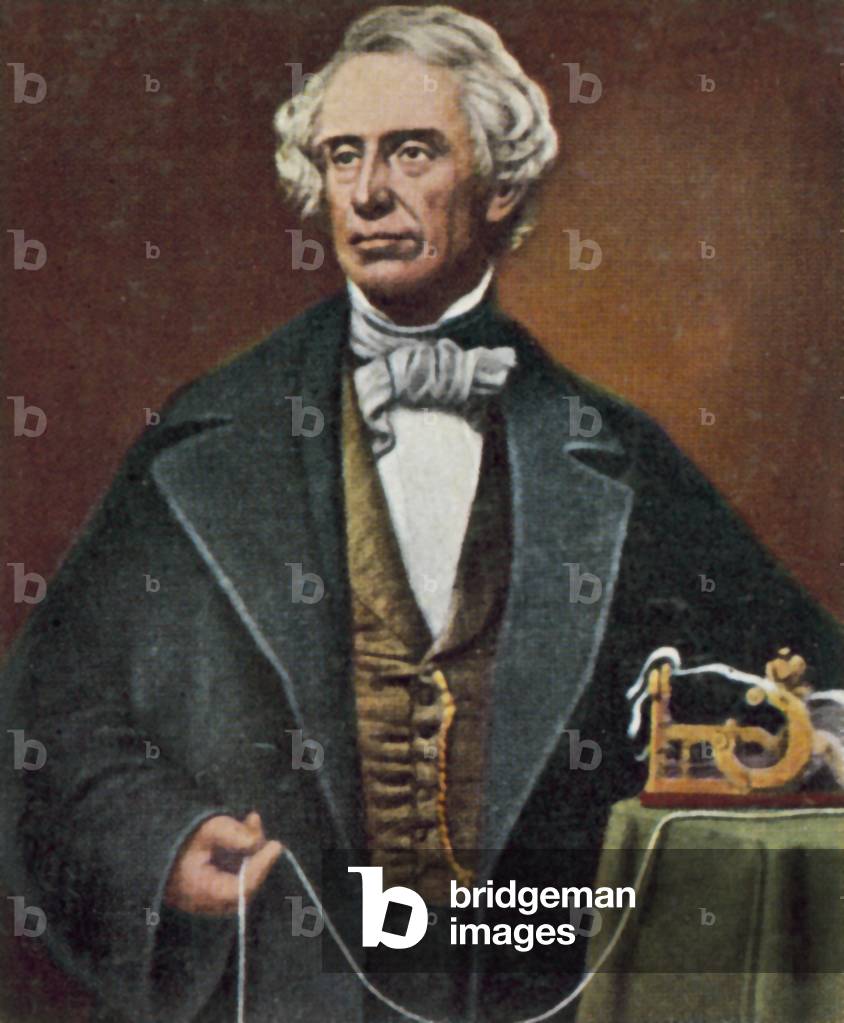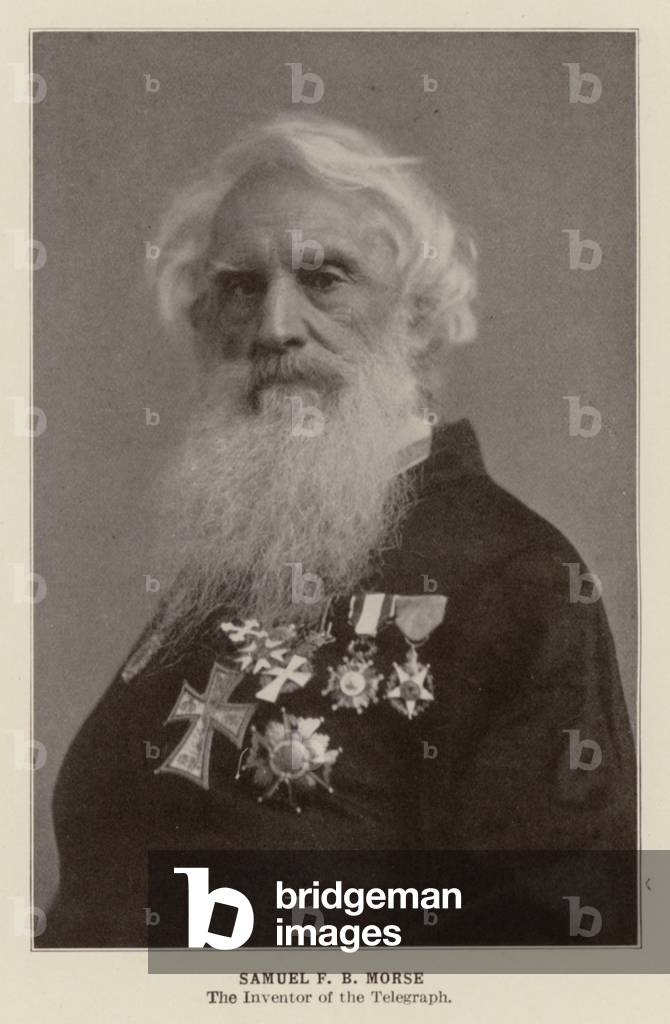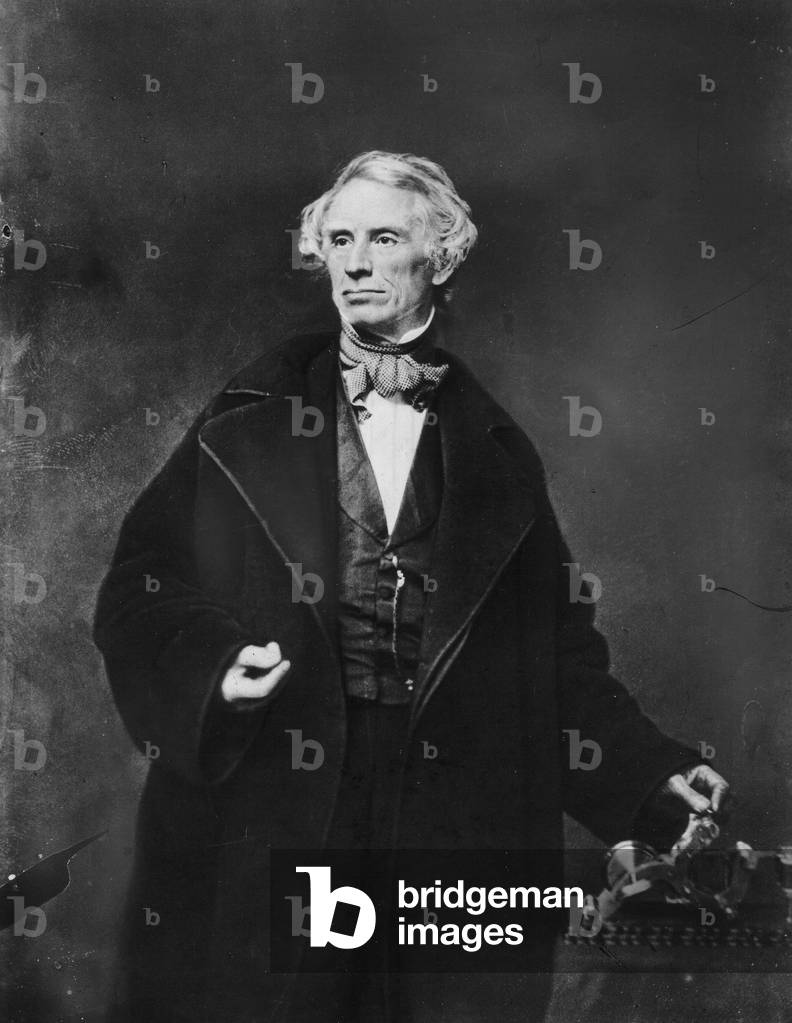
XLF3778920
Samuel Morse, American painter and creator of a single wire telegraph system. Caption reads: 'Morse hears the wonderful news'. The inventor learns from his friend Annie Ellsworth of the United States Congress' decision to supply him with funds to build an experimental telegraph line. From a painting by Chas Sheldon. SM: 27 April 1791 2 April 1872.
DC
























































































